Politicians and Public Servants of the Boston-Edison Historic District
John N. Anhut
 John Nicholson Anhut was born in 1884. In 1908 he was elected to the Michigan state Senate, at the time the youngest member of the legislature. In 1909 he founded the Anhut Motor Car Company along with Detroit mayor Philip Breitmeyer. However, Anhut relinquished control of the company the next year to concentrate on his upcoming re-election, and it went bankrupt soon after. Anhut lost his election, moved to New York, and studied for the bar. However, in 1912, he was found guilty of bribery and sentenced to four years in prison. Anhut returned to Detroit and established a law firm. In the 1920s and 30s, he was involved in the hotel industry, owning both the Imperial and Clifford hotels in downtown Detroit, as well as being the attorney for the Detroit Hotel Association. He died in 1977.
John Nicholson Anhut was born in 1884. In 1908 he was elected to the Michigan state Senate, at the time the youngest member of the legislature. In 1909 he founded the Anhut Motor Car Company along with Detroit mayor Philip Breitmeyer. However, Anhut relinquished control of the company the next year to concentrate on his upcoming re-election, and it went bankrupt soon after. Anhut lost his election, moved to New York, and studied for the bar. However, in 1912, he was found guilty of bribery and sentenced to four years in prison. Anhut returned to Detroit and established a law firm. In the 1920s and 30s, he was involved in the hotel industry, owning both the Imperial and Clifford hotels in downtown Detroit, as well as being the attorney for the Detroit Hotel Association. He died in 1977.
John Anhut lived at 100 Longfellow from the 1930s through the 1950s.
Hon. Trudy DunCombe Archer

Trudy DunCombe Archer received her JD from the Detroit College of Law. She also holds a Masters of Education in Guidance and Counseling from Wayne State and a BS in Education from Eastern Michigan University. She married Dennis Archer and encouraged him to study law (Dennis later became a Michigan Supreme Court Justice, Mayor of Detroit, and president of the ABA). She has been a judge on the 36th District Court since 1989.
Trudy DunCombe Archer resided at 1642 Longfellow, along with her sister, Beth DunCombe.
Edward L. Baker
Edward L. Baker was born in Georgetown, Indiana on February 1, 1906. He graduated from the University of Louisville in 1931, and took courses in law at the Detroit College of Law and in engineering at Wayne State University. He worked for the American Mutual Liability Insurance Company, the Wayne County Bureau of Investigation, Fisher Body Corporation, and Westinghouse Electric Corporation before serving one term in the Michigan legislature in 1947/48. He was the president of the Michigan Society for Mental Health from 1950 to 1952. In October, 1953, Postmaster General Arthur E. Summerfield appointed Baker acting Postmaster of Detroit. He served until February 28, 1976, the second longest tenure as postmaster in Detroit history. He was named National Postmaster of the Year in 1964.
Edward L. Baker lived at 1935 Chicago in the 1930s, moving to 803 W. Boston Boulevard (also the home of Harry Stormfeltz, Vincent Giuliano, and Nathan Johnson) where he lived through the 1970s.
Martin L. Bass

Martin L. Bass was born in Morgan County, Georgia in 1917. He was an insurance agent from 1935 until the onset of WWII, when he enlisted in the US Army. Upon discharge as first sergeant in 1946, he moved to Detroit and became a real estate broker, and married Mildred Amour. In 1954, Bass joined the Detroit office of the Veteran's Administration, becoming the first African-American appraiser-reviewer in the US; he later moved to the Federal Housing Administration, working as a labor relations officer. In 1958, Liberian president William V. S. Tubman appointed him as the first honorary consul to Liberia for Michigan, a post in which he served until 1979, when he was decorated as Knight Commander of African Redemption by Liberian President William R. Tolbert.
Martin L. Bass lived at 826 Edison from the 1950s through the 1970s.
Read a Georgian legislative commendation of Martin L. Bass.
Hon. Vincent M. Brennan
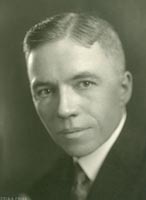
Brennan was born in Mount Clemens in 1890; his family moved to Detroit in 1895, where his father established a restaurant. Vincent attended Detroit College, graduating in 1909, then graduated from Harvard Law School in 1912. He was admitted to the bar in Detroit in 1912, then worked for the state of Michigan Labor Department and was assistant corporation counsel for the city of Detroit. He spent two years in the Michigan state senate from 1919-1920 and one term in the US House of Representatives (1921-1923). One year later, he was elected to the Wayne County Circuit Court, a position in which he served for 30 years.
Vincent Brennan lived at 627 Edison in the 1910s, and moved to 2266 W. Boston Boulevard where he lived until his death in 1959.
Read Vincent M. Brennan's Congressional biography.
Henry Butzel
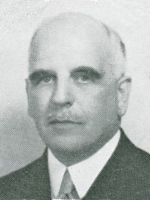
Henry M. Butzel was born in 1871, in Detroit. He attended the University of Michigan and received both a Bachelor of Philosophy and a law degree (and one of the founders of the University of Michigan Daily). He was admitted to the Bar in 1892, and immediately began practicing law in Detroit at the firm of Butzel, Levin, and Winston. In 1929, governor Green appointed Butzel to fill a vacancy on the Michigan Supreme Court, a position he held until his retirement from the bench in 1955. He served as Chief Justice four times: 1931, 1939, 1946, and 1954.
Justice Butzel lived at 101 Edison from the late 1910s until his death in 1963.
Read Henry Butzel's biography from the Supreme Court.
Ulysses Boykin
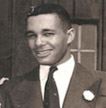 Ulysses Boykin was born in Knoxville Tennessee in 1914. He came to Detroit as a child, graduating from Northeastern and studying at Wayne State. He was an editor and owner of the Detroit Tribune, and also wrote for the Michigan Chronicle. Boykin was heavily involved in Republican politics, and was a delegate to the Republican National Convention in 1964 and 1980. He was vice-president of WGPR-TV 62, the nation's first Black-owned television station, and played a key role in securing the station's licence. Boykin died in 1987.
Ulysses Boykin was born in Knoxville Tennessee in 1914. He came to Detroit as a child, graduating from Northeastern and studying at Wayne State. He was an editor and owner of the Detroit Tribune, and also wrote for the Michigan Chronicle. Boykin was heavily involved in Republican politics, and was a delegate to the Republican National Convention in 1964 and 1980. He was vice-president of WGPR-TV 62, the nation's first Black-owned television station, and played a key role in securing the station's licence. Boykin died in 1987.
Ulysses Boykin lived at 1676 Chicago in the 1950s and 1960s.
Sherman D. Calender
Sherman Calender was born in 1869 in Ashtabula, OH. He attended Oberlin College and the Ohio State University before moving to Detroit in 1899 and beginning a law practice. He served in the state legislature from 1925-1927, was the chairman of the Michigan Crime Commission, served as a Recorder's Court judge from 1929-1935, and served on the Third Circuit Court from 1936 - 1947.
Sherman D. Calender lived at 831 Edison from the 1920s through the 1950s.
Arthur Cartwright
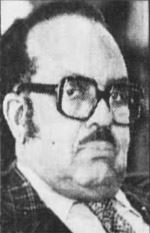
Arthur Cartwright was born in 1909 in Madison County Alabama, and graduated from the Industrial High School in Birmingham. He moved to Detroit, and later served as a Wayne County constable and bailiff of the Common Pleas Court. He was elected to the 1962, and again in 1964. In 1966 he was elected to the state Senate, and was re-elected in 1970 and 1974. He resigned his office in early 1978. Cartwright died in 1984.
Arthur Cartwright lived at 1540 W. Boston beginning in the 1950s.
James Couzens
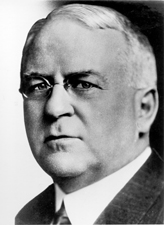
Born in Ontario, James Couzens moved to Detroit in 1890. In 1903, Couzens (then a clerk in a coal company) invested $2400 in a new venture started by Henry Ford. Couzens became vice president and general manager of Ford Motor Company, and the company prospered in part because of his business acumen. In 1919, he sold his shares back to Ford for 35 million dollars.
Couzens held other important financial positions, as president of the Bank of Detroit and director of the Detroit Trust Company. Couzens was commissioner of Detroit's street railways from 1913-1915 and police commissioner from 1916-1918. In 1919 Couzens was elected mayor of Detroit, a post he served in until he was appointed by Michigan's governor to the United States Senate in 1922 on the resignation of Truman Newberry. Couzens was elected to the seat in 1924, and then re-elected in 1930. His 1936 re-election campaign ended in a loss, attributed largely to Couzens' support for Roosevelt's New Deal. However, Couzens died in late 1936, while still in office.
Couzens also was a noted philanthropist, who established the Children's Fund of Michigan with a $10,000,000 grant, and gave $1,000,000 for relief in Detroit during the Depression. His son Frank also served as mayor of Detroit.
James Couzens lived at 610 Longfellow from 1910 until the later 1920s.
Read James Couzens' Congressional biography or a read a book about him.
Frank Couzens
Frank Couzens, the son of James Couzens, was born in Detroit in 1902. He started young in politics, winning a seat on the Detroit City Council in 1931 with enough votes to become president of that body. When mayor Frank Murphy resigned in 1933, Couzens replaced him. Later that year, Couzens ran for mayor of Detroit and was elected in his own right. He held the post for two two-year terms, from 1934 until 1938, after which he declined to run for re-election. He was an Army Colonel in WWII.
Frank Couzens lived at 2000 W. Boston in the 1920s, then moved to the home his father built at 610 Longfellow, where he lived until his death in 1950.
David H. Crowley
David Crowley was born in Leslie, Michigan in 1882. He attended the University of Michigan, received a law degree in 1905, and was admitted to the bar that same year. He served as the prosecuting attorney for Cheboyan County from 1909-1912, as assistant attorney general from 1912-1916, and as state Railroad Commissioner in 1916. In 1917, he moved to Detroit and entered private practice. He returned to public service in the 1930s, serving as the Michigan state attorney general from 1935-36 and as a member of University of Michigan board of regents from 1936-43.
David H. Crowley lived at 2234 Longfellow in the 1920s, moving to 2235 Longfellow (in a house lived in later by Samuel N. Hancock) until the 1940s.
Hon. Charles C. Diggs, Jr.
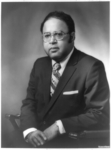
Charles Diggs was born in 1922 in Detroit, the son of a prominent businessman and funeral home owner. Diggs served in World War II, and afterwards studied as a mortician at the Wayne College of Mortuary Science. He joined his father's firm and began law studies at the Detroit College of Law. He also followed his father into politics was elected to the Michigan State Senate in 1951, serving four years. In 1954 he was elected to the U.S. House of Representatives (defeating George D. O'Brien in the primary), the first African-American Congressman from Michigan.
Diggs was was elected a total of 14 times. In his tenure in the House, Diggs was a champion of civil rights, and was the founder and first chairman of the Congressional Black Caucus. He remained in Congress until caught up in a scandal in the late 1970s. He resigned his seat in 1980. After his political career, Diggs opened a funeral home in suburban Maryland. He died in 1998.
Charles C. Diggs lived at 2522 W. Boston in the 1950s.
Read Charles Diggs's Congressional biography and his Wikipedia article.
Charles S. Farmer
 Charles S. Farmer was born in 1920, and graduated from Tennessee State University. He moved to Detroit, waiting tables to put himself through the University of Detroit Law School. After graduation, he became assistant Wayne County prosecutor, then assistant state attorney general before entering private practice. In 1961. he was appointed as a judge of the Detroit Common Pleas Court. In 1965, he was elected to the Wayne County Circuit Court, where he spent over 25 years. He died in 2015.
Charles S. Farmer was born in 1920, and graduated from Tennessee State University. He moved to Detroit, waiting tables to put himself through the University of Detroit Law School. After graduation, he became assistant Wayne County prosecutor, then assistant state attorney general before entering private practice. In 1961. he was appointed as a judge of the Detroit Common Pleas Court. In 1965, he was elected to the Wayne County Circuit Court, where he spent over 25 years. He died in 2015.
Charles S. Farmer lived at 2075 W. Boston in the 1960s.
Dorothy D. Grundstein
Dorothy D. Grundstein was born in Warsaw, Poland in 1913. She attended Ohio State University, where she met her future husband, Nathan D. Grundstein. Dorothy Grundstein was active in Michigan Democratic local, country, and state politics. During that period she served as precinct delegate for her ward, an alternate delegate to the Democratic National Convention from Michigan, 1956; and a member of Michigan Democratic State Central Committee. She died in 2005.
Dorothy and Nathan Grundstein lived at 826 Longfellow from 1947 to 1958.
Ira W. Jayne
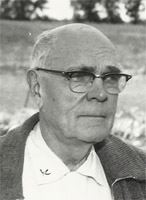 Ira W. Jayne was born in Fenton, MI in 1882. He studied law at the University of Michigan, graduating in 1905. He became the attorney for The Society for Prevention of Cruelty to Children in Detroit, and in 1915 was elected to the Wayne County Circuit Court. He was defeated in 1917, but re-elected in 1919. In 1929 he became the chief judge of the court, and served as chief judge until his retirement in 1956.
Ira W. Jayne was born in Fenton, MI in 1882. He studied law at the University of Michigan, graduating in 1905. He became the attorney for The Society for Prevention of Cruelty to Children in Detroit, and in 1915 was elected to the Wayne County Circuit Court. He was defeated in 1917, but re-elected in 1919. In 1929 he became the chief judge of the court, and served as chief judge until his retirement in 1956.
He also served as the national Vice President of the NAACP and the American Bar Association Chairman. He was a delegate to Republican National Convention from Michigan in 1920 and a Presidential Elector for Michigan in 1928.
Ira W. Jayne lived at 1416 Chicago from the 1920s until his death in 1961.
Read Ira W. Jayne's article on Wikipedia.
Harry F. Kelly

Harry Kelly was born in in 1895 in Ottawa, Illinois and received a law degree from Notre Dame University in 1913. He served in the US Army during WWI, losing a leg in the Battle of Chateau-Thierry and earning the Croix de Guerre. After the war, he went into public service, being elected as State's Attorney for LaSalle County, IL in 1920. In the meantime, his father, Henry M. Kelly, moved to Detroit and set up a law practice there with Harry's younger brother' the firm represented General Motors in Michigan. When Harry Kelly's term expired in 1922, he joined his father and younger brother in Detroit at the firm of Kelly, Kelly, and Kelly.
Kelly later became assistant prosecuting attorney for Wayne County and then was appointed as head of the Detroit area Liquor Control Commission. Soon thereafter, he was elected as Michigan Secretary of State, serving from 1939-43. In 1942, Kelly ran for governor, winning a tight race with the incumbent. He served as governor until 1946, when he did not run for re-election. He later served on the Michigan Supreme Court from 1954-71.
Harry F. Kelly lived at 1128 Atkinson; when his father died, he moved to 2465 Chicago Boulevard, where he lived during the 1950s.
Read Harry Kelly's biography from the Supreme Court.
Franz C. Kuhn
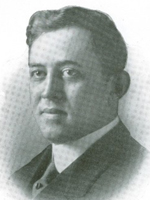
Franz Kuhn was born in Detroit in 1872 and began practicing law in Mt. Clemens. He was elected Prosecuting Attorney of Macomb County in 1898, then Probate Judge in 1904. He resigned as judge to work as Attorney General of the state of Michigan. In 1912, he was appointed to the Michigan's Supreme Court, a post he held for seven years, acting as Chief Justice from 1917-1918. He finished his career as the president of Michigan Bell Telephone Company.
Justice Kuhn lived at 112 Edison in the 1910s.
Read Franz Kuhn's biography from the Supreme Court.
Esther LaMarr
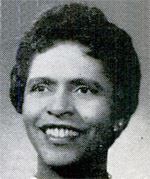 Esther LaMarr was born in 1916 in Baltimore, Maryland, the only daughter of Rev. Arthur Randall. Her mother, Ada Randall, was reputedly the first African American kindergarten teacher in the nation. The family moved to Detroit, and Esther graduated from Eastern High School and later Talladega College in Alabama. She embarked on a career in social work, working as a probation officer in Detroit. She also earned masters degrees from the University of Michgian and George Washington University, as well as a law degree from the University of Detroit. LaMarr later became the Executive Secretary of the Detroit Commission on Children and Youth. In 1964, President Lyndon Johnson appointed her special assistant to the head of the Veteran's Administration. She was the first woman to hold this type of position, and was the first African American woman to be appointed to such a high post. She worked at this post until her death in 1967.
Esther LaMarr was born in 1916 in Baltimore, Maryland, the only daughter of Rev. Arthur Randall. Her mother, Ada Randall, was reputedly the first African American kindergarten teacher in the nation. The family moved to Detroit, and Esther graduated from Eastern High School and later Talladega College in Alabama. She embarked on a career in social work, working as a probation officer in Detroit. She also earned masters degrees from the University of Michgian and George Washington University, as well as a law degree from the University of Detroit. LaMarr later became the Executive Secretary of the Detroit Commission on Children and Youth. In 1964, President Lyndon Johnson appointed her special assistant to the head of the Veteran's Administration. She was the first woman to hold this type of position, and was the first African American woman to be appointed to such a high post. She worked at this post until her death in 1967.
Esther Lamarr lived at 2030 W. Boston (later the home of Conrad Mallett) in the 1950s.
Arthur F. Lederle
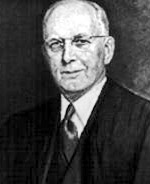
Arthur F. Lederle was born in 1887, graduated from Eastern Michigan 1909, and received a law degree from the Detroit College of Law in 1915. He worked for the Detroit Board of Education from 1914 to 1923, then became assistant city attorney of Detroit. He remained in that position until 1936, with a one-year hiatus in 1933-34 to work as special assistant state attorney general of Michigan. On February 20, 1936, Lederle was nominated by President Franklin D. Roosevelt to a seat on the United States District Court for the Eastern District of Michigan. Lederle served on the court until his death in 1972, serving 11 years as chief judge from 1948 to 1959, and assuming senior status for the last 12 years, from 1960-1972.
Arthur F. Lederle lived at 1258 Edison from the early 1930s until the late 1960s.
Sen. Carl Levin
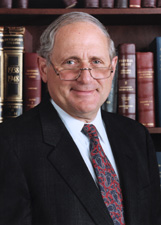
Carl Levin was born in Detroit in 1934 and graduated first from Central High School and then from Swarthmore College. He attended Harvard Law School, graduating in 1959. He practiced law before embarking on a career in public service. He was appointed an assistant attorney general of Michigan and the first general counsel for the Michigan Civil Rights Commission, and worked to establish establish the Detroit Public Defender's Office. In 1969 he was elected to the Detroit City Council, becoming president in 1974. He sat on the council until 1977. The next year, Levin was elected to the U. S. Senate, holding the same seat that James Couzens had decades earlier when Levin was born. He was re-elected four times, and served as chair of the Senate Armed Services Committee. He retired from the Senate in 2015.
Carl Levin lived with his brother Sander Levin and his father Saul at 2055 W. Boston during the 1940s.
Read Carl Levin's Congressional biography.
Hon. Sander Levin
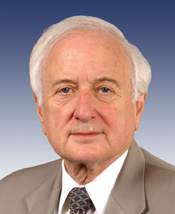
Sander Levin was born in Detroit in 1931 and graduated first from Central High School and then from the University of Chicago. He attended Harvard Law School, graduating in 1957. He practiced law before embarking on a career in public service. He was elected to the Michigan State Senate in 1965 and served until 1970, acting as Senate Minority Leader for the last two years. He ran for governor twice, and was the assistant administrator for the Agency for International Development. In 1982, he was elected to the U.S. House of Representatives, a position that he still holds.
Sander Levin lived with his brother Carl Levin and his father Saul at 2055 W. Boston during the 1940s.
Read Sander Levin's Congressional biography.
Conrad Mallett Sr.
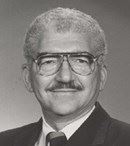 Conrad Mallet Sr. was born in 1928 in Ames, Texas. His father died when he was eight, and Mallett had to work after school to help support the family. After graduating from high school, Mallett enlisted in the Army in 1946. After discharge in 1948, Mallett moved to Detroit to attend Wayne State University. There, he met and married Claudia Gwendolyn Jones; the couple had three children, including future Michigan Supreme Court Justice Conrad Mallett Jr. He eventually received both a bachelor's and doctorate degree in education from Wayne. He became a teacher for a few years, and in 1964 was the first African-American assistant to Detroit mayor Jerome P. Cavanagh. In 1968 he left to become a vice-president at Wayne State, and worked there until 1977 when mayor Coleman Young appointed him Director of the Department of Streets and Railways. In 1970 he was elected to the Wayne County Board of Commissioners, serving ten years, including serving as chair in 1978.
Conrad Mallet Sr. was born in 1928 in Ames, Texas. His father died when he was eight, and Mallett had to work after school to help support the family. After graduating from high school, Mallett enlisted in the Army in 1946. After discharge in 1948, Mallett moved to Detroit to attend Wayne State University. There, he met and married Claudia Gwendolyn Jones; the couple had three children, including future Michigan Supreme Court Justice Conrad Mallett Jr. He eventually received both a bachelor's and doctorate degree in education from Wayne. He became a teacher for a few years, and in 1964 was the first African-American assistant to Detroit mayor Jerome P. Cavanagh. In 1968 he left to become a vice-president at Wayne State, and worked there until 1977 when mayor Coleman Young appointed him Director of the Department of Streets and Railways. In 1970 he was elected to the Wayne County Board of Commissioners, serving ten years, including serving as chair in 1978.
In 1983, Mallett left Detroit for a post as vice-president at the Community College of Baltimore, and in 1985 he was appointed President of Greater Hartford Community College in Connecticut. He retired from this position in 1996. Conrad Mallett Sr. died in 2017.
Dr. Conrad Mallett Sr. lived at 2030 W. Boston (previously the home of Esther LaMarr) beginning in 1964.
Read an obituary for Dr. Conrad Mallett.
Conrad Mallett Jr.
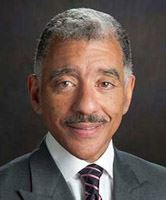 Conrad Mallet Jr. was born in 1953 in Detroit, the son of Conrad Mallett Sr. and his wife Claudia. He attended schools in Detroit, then received a bachelor's degree from UCLA in 1975. He wen on the receive a law degree from the University of Southern California in 1979. He returned to Michigan and was admitted to the bar. In 1983, he became governor Jim Blanchard's Director of Legislative Affairs, and in 1985 moved on to become the Executive Assistant to Detroit mayor Coleman Young. Conrad Mallett Jr. lived at 2030 W. Boston in the 1960s with his father, Conrad Mallett Sr. In 1990, he was appointed to the Michigan Supreme Court, and was elected in 1992 and again in 1994. He became Chief Justice in 1997, and retired from the Court in 1998. He then joined the Detroit Medical Center, and in 2003 was named President of DMC_Sinai Grace.
Conrad Mallet Jr. was born in 1953 in Detroit, the son of Conrad Mallett Sr. and his wife Claudia. He attended schools in Detroit, then received a bachelor's degree from UCLA in 1975. He wen on the receive a law degree from the University of Southern California in 1979. He returned to Michigan and was admitted to the bar. In 1983, he became governor Jim Blanchard's Director of Legislative Affairs, and in 1985 moved on to become the Executive Assistant to Detroit mayor Coleman Young. Conrad Mallett Jr. lived at 2030 W. Boston in the 1960s with his father, Conrad Mallett Sr. In 1990, he was appointed to the Michigan Supreme Court, and was elected in 1992 and again in 1994. He became Chief Justice in 1997, and retired from the Court in 1998. He then joined the Detroit Medical Center, and in 2003 was named President of DMC_Sinai Grace.
Conrad Mallett Jr. lived at 2030 W. Boston (previously the homer of Esther LaMarr) with his parents, beginning in 1964.
Read Conrad Mallett Jr.'s biography from the Michigan Supreme Court Historical Society.
Truman Newberry
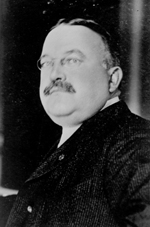
Truman Newberry was born in 1864 in Detroit, the son of a wealthy businessman. He worked at a number of business ventures, working his way up to the position of manager of the Detroit, Bay City & Alpena Railway, and becoming president and treasurer of the Detroit Steel & Spring Company, along the way shrewdly investing his fortune to become a multi-millionaire. In 1902, he helped organize the Packard Motor Car Company.
In the late 1890s, Newberry served with the US Navy, including as a lieutenant on the USS Yosemite (with lifelong friend and brother-in-law Henry Joy) during the Spanish-American War. He served as Assistant Secretary of the Navy from 1905-1908, and as Secretary of the Navy in 1908 and 1909. In 1919, he was elected to the United States Senate in a fierce contest with Henry Ford. There were some irregularities in the election, resulting in an investigation and trial. As a result, Newberry wasn't seated in the Senate for some time, and he eventually resigned in 1922.
In 1913, Truman Newberry and his brother John platted out the Boston Boulevard subdivision, stretching from Hamilton to 14th Street (now Rosa Parks), encompassing the middle third of the Boston-Edison neighborhood.
Read Truman Newberry's Congressional biography.
George D. O'Brien

George Donoghue O'Brien was born in Detroit on January 1, 1900. He served in WWI, then received an undergraduate degree from the University of Detroit and went on to graduate from the University of Detroit Law School and gain admittance to the bar in 1924. He was first elected to the US House of Representatives in 1936, eventually serving seven terms (not all consecutive) in Washington. In 1954, O'Brien lost the primary race to Charles C. Diggs, Jr., and became assistant corporation counsel of the District of Columbia. He passed away in 1957, and is interred in Mount Olivet Cemetery in Detroit. George O'Brien lived at 2475 W. Boston Boulevard in the 1950s and 1960s.
Read George D. O'Brien's Congressional biography.
Patrick H. O'Brien
Patrick O'Brien was born in 1868 in Phoenix, MI, in the Keewenaw. He received a law degree from the Northern Indiana School of Law in 1891 He went into private practice, then became the city attorney of Laurium from 1901-1906, and a judge on the 12th circuit (in the Upper Peninsula) from 1912 - 1922. O'Brien ran unsuccessfully for the state senate, US representative, Supreme Court justice, and governor of Michigan. He served one term as the Attorney General of Michigan, from 1933- 1934.
Patrick H. O'Brien lived at 2225 Edison in the 1930s, where Harry Heilmann later lived.
George M. Read

George M. Read was born in Illinois. When he was a teenager, his family moved to Ann Arbor and he attended high school there, going on to the University of Michigan and the Detroit College of Law. he worked as registrar of the Detroit Probate court from 1909 - 1927, becoming a judge in 1927. He later clerked for the US District court, and served as Secretary-General of the War Crimes Commission at Nuremberg from 1946 - 1947.
George M. Read lived at 1175 Chicago from the late 1920s until it was demolished to make way for the Lodge Freeway in the 1950s.
Jessie P. Slaton
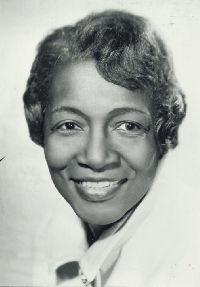
Jessie Pharr Slaton was born in 1908 in Georgia, and came to Detroit at the age of eight. In 1933, she obtained a secretarial position in Detroit City Hall, becoming one of the first African-Americans in Detroit City government to hold a white-collar job. Despite the hostility, she excelled at her work, but left to enroll at Wayne State University, obtaining a degree in Special Education. She was involved in the civil rights struggle, and eventually took up law, graduating from the University of Detroit Law School in 1951. She worked for the City of Detroit and in private practice, concentrating on human rights. In 1972, Slaton was appointed as the first woman referee in the Recorder's Court Traffic and Ordinance Division. In 1978, she was appointed to the office of Common Pleas Judge in the City of Detroit, a position which she held until her retirement. She was killed on September 1, 1983, when Korean Airlines flight 007 was shot down by a Soviet missile. She was married to boxing trainer George Slaton.
Jessie P. and George Slaton lived at 1232 W. Boston Boulevard in the 1950s and 1960s.
Read Jessie Pharr Slaton's biography in the Michigan Women's Hall of Fame.
Hobart Taylor, Jr.
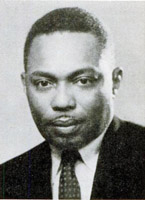
Hobart Taylor, Jr. was born in 1920, the son of wealthy Texas businessman Hobart Taylor, Sr. Taylor Jr. attended Prairie View A & M, Howard University, and the University of Michigan Law School, where he edited the Law Review. After graduating, was assistant to Michigan Supreme Court Chief Justice Raymond W. Starr for two years, then entered private practice in Detroit. He served as Wayne County Prosecutor. In 1961, Taylor went to Washington DC to become special assistant the then-Vice President Johnson, and in 1964 (when Johnson was President) became an associate counsel in the White House. While working for Johnson, he headed up the Committee for Equal Employment Opportunity, and is credited with coining the term, "Affirmative Action." He left the White House to become director of the Import-Export bank; he eventually sat on the boards of Standard Oil, Westinghouse, A & P, Aetna, Eastern Airlines, and Burroughs.
Hobart Taylor, Jr lived at 2265 W. Boston Boulevard in the 1950s and 675 W. Boston Boulevard in the 1960s.
Read a short biography of Hobart Taylor, Jr.
Paul W. Voorhies
Paul W. Voorhies was born in Plymouth MI in 1875. He attended the University of Michigan, graduating with a bachelor's in 1899 and a law degree in 1900. He was admitted to the bar in 1900. He serve at the assistant prosecuting attorney for Wayne County from 1912 to 1918, and the prosecuting attorney from 1921 to 1924. Voorhies was the Attorney General of Michigan for one term from from 1931 to 1932.
Paul W. Voorhies lived at 1180 Longfellow (now demolished) from the late 1910s through the 1940s.
Leon M. Wallace

Leon M. Wallace was an insurance executive in Detroit. In 1958, he was named the director-secretary of the Detroit Loyalty Investigating Committee, the first African American to head a city commission. Beginning in 1961, he served in the Kennedy administration's Veteran's Affairs Agency, first as assistant administrator and later as the VA's Director of Insurance Services.
Leon M. Wallace lived at 2491 Longfellow from the late 1950s until the 1970s.
Arthur Webster
Arthur Webster was born in Iowa in 1871. His family moved to Missouri, where Webster spent his early years. He attended the University of Michigan, where he graduated with a law degree in 1892. He entered private practice in Detroit, then spent five years as an assistant prosecutor. Afterwards he opened his own successful law firm, partnering with Edward Denby (who later became Secretary of the Navy). An early employee of the firm was Kim Sigler, future governor of Michigan. In 1919, he was elected to the circuit court bench, where he served until his retirement in 1956.
Judge Webster lived at 1466 Longfellow from the late 1910s until his death in 1966.
Clarence E. Wilcox
Clarence E. Wilcox was born in 1880 in Adrian, Michigan. He attended Adrian College, then graduated from law school at the University of Michigan in 1905. He moved to Detroit soon after, joining the firm of Rackham and Anderson (later Anderson, Wilcox, Lacy, and Lawton) in 1905 and becoming a partner in 1909. This proved fortuitous, as both John Anderson and Horace Rackham were early investors in Ford Motor Company. In 1919, Detroit mayor (and Ford investor) James Couzens appointed Wilcox Corporation Counsel for Detroit. He was later attorney for Rackham's sizeble estate.
Clarence E. Wilcox lived at 1616 Chicago from the 1920s into the 1940s.

